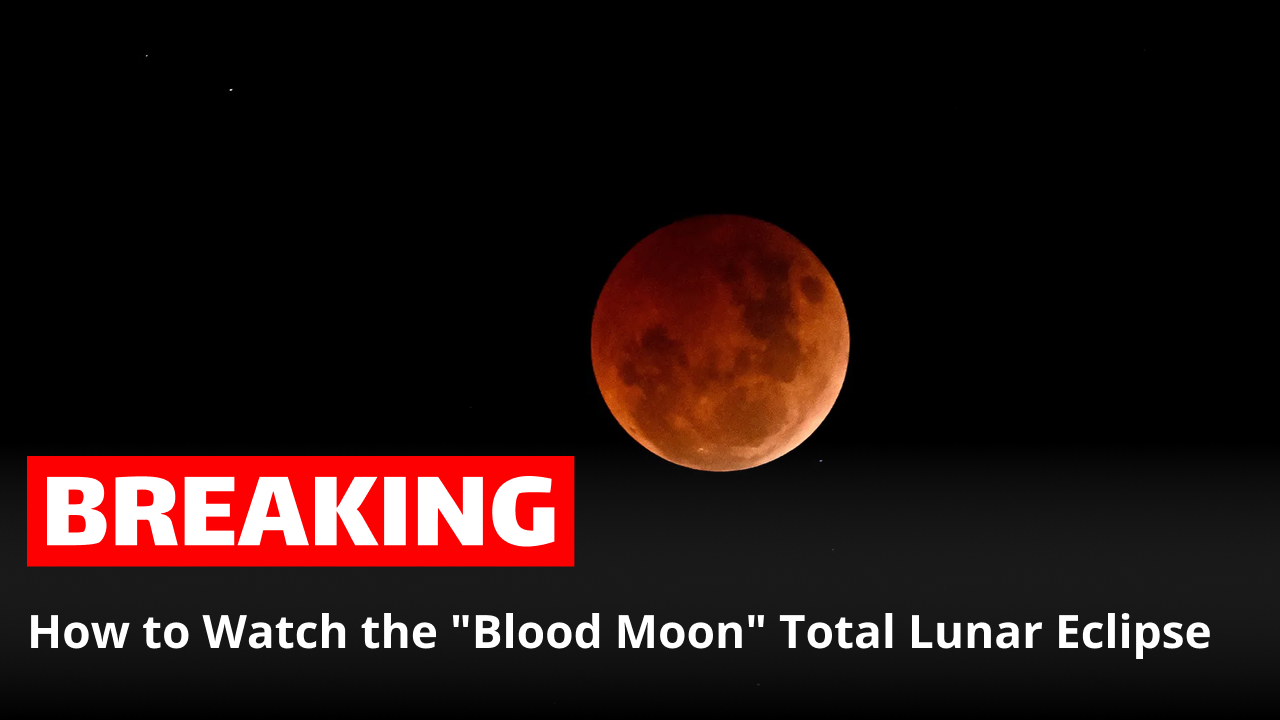This detailed guide expands on the key points, providing a thorough exploration for skywatchers eager to witness the ‘Blood Moon’ total lunar eclipse on March 13-14, 2025. It covers the science, timing, viewing tips, and safety, ensuring readers are well-prepared for this celestial event. The content is designed for both novice observers and astronomy enthusiasts, with a focus on clarity and engagement.
Understanding the ‘Blood Moon’ Total Lunar Eclipse

A total lunar eclipse occurs when the Earth, Sun, and Moon align, with Earth positioned between the two, casting its shadow on the Moon. This alignment is possible only during a full moon, when the Moon is directly opposite the Sun. The Earth’s shadow has two parts: the penumbra (a lighter, partial shadow) and the umbra (a darker, complete shadow). When the Moon passes fully into the umbra, it results in a total lunar eclipse, often characterized by the Moon taking on a reddish hue, earning it the nickname ‘Blood Moon.’
The reddish color, a fascinating aspect, arises from sunlight filtering through Earth’s atmosphere. As sunlight passes through, shorter wavelengths like blue and green are scattered more than longer wavelengths like red and orange, a process similar to why sunsets appear red. This filtered light illuminates the Moon, giving it a range of colors from pale red to deep, dark red, depending on atmospheric conditions such as dust or pollution levels. Scientists use the Danjon scale (0 for very dark to 4 for very bright) to measure the eclipse’s color and brightness, adding a layer of scientific intrigue.
Not every full moon leads to an eclipse, as the Moon’s orbit is tilted about 5 degrees relative to Earth’s orbit around the Sun. This tilt means the Moon usually passes above or below Earth’s shadow, making total lunar eclipses less frequent. On average, there are two to three lunar eclipses annually, which can be penumbral, partial, or total, with total eclipses occurring zero to three times a year. The pattern repeats every 18 years and 11 days, known as a saros cycle, aiding in predicting future events.
Why is it Called a ‘Blood Moon’?

The term ‘Blood Moon’ specifically refers to the Moon’s reddish appearance during a total lunar eclipse, a phenomenon rooted in atmospheric science. When the Moon is in the umbra, it’s illuminated by sunlight refracted through Earth’s atmosphere, which acts like a lens, bending light and filtering out shorter wavelengths. This scattering effect, where blue and green light is dispersed more than red, results in the Moon appearing red or orange. The exact shade can vary based on atmospheric conditions; for instance, a clear atmosphere might yield a bright red, while more particles, such as after volcanic eruptions, can make it darker or more orange.
Historically, the term ‘Blood Moon’ carries cultural and religious significance, often seen as an omen in various traditions. This adds a layer of mystique, making the event not just a scientific spectacle but also a culturally rich experience. Understanding this helps viewers appreciate the event’s broader context, connecting modern observations with ancient interpretations.
Timing and Visibility for March 13-14, 2025
For the upcoming eclipse, visibility spans North America, South America, Europe, Africa, and parts of Asia and Australia, making it accessible to a wide audience. Lunar eclipses are unique in that they’re visible from anywhere the Moon is above the horizon, unlike solar eclipses, which require specific locations for totality. This broad visibility ensures many can participate, provided the weather cooperates.
Exact timing varies by location, and for precision, resources like timeanddate and NASA’s eclipse site are invaluable. For example, in Washington DC, the eclipse phases are as follows:
| Eclipse Stage | Local Time in Washington DC (EDT) | Visible in Washington DC |
|---|---|---|
| Penumbral Eclipse begins | Mar 13 at 11:57:28 pm | Yes |
| Partial Eclipse begins | Mar 14 at 1:09:40 am | Yes |
| Full Eclipse begins | Mar 14 at 2:26:06 am | Yes |
| Maximum Eclipse | Mar 14 at 2:58:43 am | Yes |
| Full Eclipse ends | Mar 14 at 3:31:26 am | Yes |
| Partial Eclipse ends | Mar 14 at 4:47:52 am | Yes |
| Penumbral Eclipse ends | Mar 14 at 6:00:09 am | Yes |
This table shows the eclipse lasts about 6 hours, with the total phase (full eclipse) lasting 65 minutes, from 2:26 AM to 3:31 AM. The Moon’s position in the sky is crucial; higher above the horizon offers better viewing, though low horizons might face atmospheric distortion or terrain obstruction. For other locations, converting UTC times (provided on eclipse websites) to local time is essential, considering daylight saving time where applicable.
Tips for Optimal Viewing
To maximize your experience, consider these detailed tips:
- Find a Dark Location: Light pollution can obscure details, so seek rural areas, parks, or dark sky sites. This enhances visibility, especially during the subtle penumbral phase.
- Check Weather Conditions: Clear skies are critical. Check forecasts and choose locations with minimal cloud cover, as clouds can block the view entirely.
- Use Optical Aids: While visible to the naked eye, binoculars or telescopes reveal more detail, such as surface textures during the eclipse. This can make the experience more immersive, though it’s not necessary for enjoyment.
- Arrive Early: Set up before the eclipse starts to get comfortable and ensure you don’t miss the beginning. This also allows time to adjust to the darkness.
- Bring Comfort Items: Eclipses can last hours, so bring chairs, blankets, or sleeping bags, especially if it’s cold. Comfort enhances enjoyment, particularly during late-night viewing.
- Photograph the Event: For photography enthusiasts, use a camera with a zoom lens or attach it to a telescope, using a tripod for stability. This captures the Moon’s changing colors and phases, creating lasting memories.
- Understand the Eclipse Phases: Knowing the stages—penumbral, partial, total, and back—helps appreciate the gradual changes. This knowledge transforms viewing into an educational journey.
- Be Patient: Changes happen slowly, so take time to observe each phase. Patience allows for a deeper connection with the event.
- Share the Experience: Invite friends or family to join, making it a social event. Shared experiences can amplify enjoyment and create communal memories.
- Respect the Environment: If in natural areas, leave no trace, packing out trash and following local rules. This ensures future viewers can enjoy similar settings.
The Science Behind the Color
The reddish hue, or ‘Blood Moon’ effect, is a result of atmospheric refraction and scattering. Sunlight passing through Earth’s atmosphere bends, filtering out shorter wavelengths (blue, green) more than longer ones (red, orange). This filtered light illuminates the Moon, creating the red appearance. Variability in color—pale red to deep red—depends on atmospheric conditions, such as dust or pollution levels. For instance, post-volcanic eruptions can darken the Moon, while clear skies might brighten it. This scientific insight, measured by the Danjon scale, enriches the viewing experience, connecting it to broader atmospheric physics.
Safety Considerations
Unlike solar eclipses, lunar eclipses pose no eye safety risks for naked-eye viewing, as the Moon reflects sunlight and remains safe even in shadow. However, if using telescopes or binoculars, ensure they’re not aimed at the Sun, which could cause eye damage. Additionally, be mindful of surroundings in dark, unfamiliar areas, bringing flashlights for navigation and watching for hazards like uneven terrain.
Historical and Cultural Context
The ‘Blood Moon’ has historical significance, often seen as an omen in various cultures, adding a layer of mystique. This cultural lens, combined with scientific understanding, makes the event a bridge between past interpretations and modern observation, enhancing its appeal.
Conclusion and Call to Action
Witnessing the ‘Blood Moon’ total lunar eclipse is a rare, awe-inspiring event that connects us to the cosmos. For March 14, 2025, mark your calendar, find a dark spot with clear skies, and prepare with binoculars and comfort items. The ‘Blood Moon’ total lunar eclipse is a spectacular event that can be viewed from any location where the Moon is above the horizon during the eclipse. To best enjoy this celestial phenomenon, find a dark location, check the weather, use optical aids, arrive early, bring comfort items, and understand the eclipse phases. Don’t miss out—grab your gear, invite friends, and immerse yourself in this unforgettable celestial dance. It’s an experience that will leave lasting memories, bridging science, history, and wonder.






